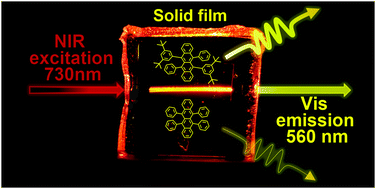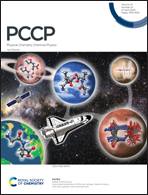Impact of t-butyl substitution in a rubrene emitter for solid state NIR-to-visible photon upconversion
Abstract
Solid state NIR-to-visible photon upconversion (UC) mediated by triplet–triplet annihilation (TTA) is necessitated by numerous practical applications. Yet, efficient TTA-UC remains a highly challenging task. In this work palladium phthalocyanine-sensitized NIR-to-vis solid UC films based on a popular rubrene emitter are thoroughly studied with the primary focus on revealing the impact of t-butyl substitution in rubrene on the TTA-UC performance. The solution-processed UC films were additionally doped with a small amount of emissive singlet sink tetraphenyldibenzoperiflanthene (DBP) for collecting upconverted singlets from rubrene and in this way diminishing detrimental singlet fission. Irrespective of the excitation conditions used, t-butyl-substituted rubrene (TBR) was found to exhibit enhanced TTA-UC performance as compared to that of rubrene at an optimal emitter doping of 80 wt% in polystyrene films. Explicitly, in the TTA dominated regime attained at high excitation densities, 4-fold higher UC quantum yield (ΦUC) achieved in TBR-based films was caused by the reduced fluorescence concentration quenching mainly due to suppressed singlet fission. Under low light conditions, i.e. in the regime governed by spontaneous triplet decay, even though triplet exciton diffusion was obstructed in TBR films by t-butyl moieties, the subsequently reduced TTA rate was counterbalanced by both suppressed singlet fission and non-radiative triplet quenching, still ensuring higher ΦUC of these films as compared to those of unsubstituted rubrene films.



 Please wait while we load your content...
Please wait while we load your content...